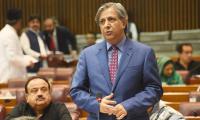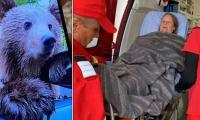Part - II
The phased introduction of a new polio vaccination regime, the injectable polio vaccine, has proved a fillip to the initiative. The globally synchronised switch from the trivalent polio vaccine to the bivalent polio vaccine, which went into effect on April 25 in both routine immunisation and polio campaigns, constitutes a major step as this will further enhance the potency of the vaccine. Type 2 Poliovirus has disappeared since 1999 and experts believe there is no need to administer a vaccine against this particular type of virus.
There is much to laud as far as Pakistan’s march towards stopping poliovirus transmission is concerned. Pakistan is systematically and vigorously pushing to interrupt transmission in order to meet the global eradication goal. By systematically refining its approach in planning, monitoring, evaluation and accountability, the Pakistan programme has all the required tools it needs to reach every last child.
Pakistan is on the road to zero. With access to nearly all children across the country, a supportive medical fraternity, civil society, religious leadership and media, an increasingly robust security mechanism to ensure the safety of vaccinators, a brave and committed network of frontline health workers who enjoy the trust and support of their communities, safe and effective vaccines, and a concerned and well-informed generation of parents who want to protect their children, the finish line is in sight
But we have been close to eradication before – three times in the past ten years – and each time the virus survived because it found sufficient pockets of under-immunised children. This time, Pakistan is committing to nothing less than leaving no child unvaccinated and vulnerable to this crippling virus.
In 2015, Pakistan recorded 82 percent fewer cases than in 2014. In the first quarter of 2016 only eight cases were reported, compared to 21 cases during the first quarter of 2015. This shows that the intensity of transmission has subsided. But the virus remains active in three remaining sanctuaries – the Khyber-Peshawar corridor, Karachi and the Quetta block. Though recent cases have surfaced from districts outside these corridors, the genetic sequencing of all cases has originated from the same three reservoirs and the risks span beyond these areas as well.
The intermittent detection of the virus from environmental samples in low-risk areas in Punjab (Rawalpindi, Lahore, Multan and Faisalabad) and in Northern Sindh (Hyderabad and Sukkur) indicate that pockets of under-immunised children are allowing the virus to survive. Our message is very clear – we won’t be done anywhere, until we are done everywhere.
Campaign data indicates there has been a significant decrease in the number of still missed children from 0.66 percent to 0.33 percent at the end of March 2016. The number of infected districts is also on the decline: only seven districts have reported a case or positive environmental samples in 2016 - a reduction from 12 districts in 2015. But declining and decreasing are not the terms to describe eradication. ‘Zero’ is what we need.
Thanks to the successful launch of Operation Zarb-e-Azb, and thereby the improved security situation, the number of inaccessible children across Pakistan has been drastically reduced from almost 600,000 to less than 16,000. The launch of the operation against militancy provided accessibility to the vulnerable children of North & South Waziristan and Khyber Agency. In some areas of North Waziristan, a door-to-door campaign started in September 2015 after a five-year delay. The programme has benefited from a more enabling security architecture, which supports access to practically all children in Pakistan and ensures safety for frontline workers.
The issue of cross-border transmission (with Afghanistan) of the poliovirus is being effectively addressed through improved coordination. A technical team of Pakistani polio experts recently visited Kabul to carry out joint planning for a synchronised and coordinated polio eradication effort.
To ensure community ownership and acceptability in resistant pockets, the programme is successfully holding health camps where routine immunisation and treatment of minor ailments are also being provided.
The vast majority of parents across Pakistan accept and trust the polio vaccine, and accept it each time it is offered. Ours is the highest acceptance rate of any polio-affected country in the world. In addition, thousands of national and local health associations, medical practitioners, religious leaders and civil society groups are all contributing to the eradication effort. A brave and heroic network of 200,000 local frontline health workers is at the centre of this effort and should be supported to accomplish their noble task.
We know where the virus is today. These are its final sanctuaries. Through the use of every potential tool, including mass vaccination of children, we must make every campaign count and use every opportunity to build on our experiences from lessons already learnt in this long fight. Any child left unvaccinated is a risk to all of us. Each of us in our community has a role to play to support our health workers. Everyone must do their part.
The road to zero will continue to be challenging, and with the potential to throw up new surprises. But Pakistan cannot come this close and fail. We are committed not only to get to ‘zero’ polio but also remain at ‘zero’ polio.
Concluded
The writer is the Prime Minister’s Focal Person for Polio Eradication.
An aeroplane of the national flag carrier of Pakistan is seen in this file photo. — AFPWhile Pakistan considers...
Representational image of a graph depicting various variables. — APP/FileInitiated by the centre and fiercely...
In this picture taken on April 16, 2023, people throng a market area during shopping in Lahore. — AFPOne of the...
Honour crimes also target men. In Sikandar Ali Lashari vs The State, SHC upheld conviction passed by ATC for honour...
If Sindh earmarks Rs20 million per police station, it will cost only Rs10 billion to make them effective first...
A complex and difficult policy environment seems to be highlighted by US’s recent application of sanctions on...







